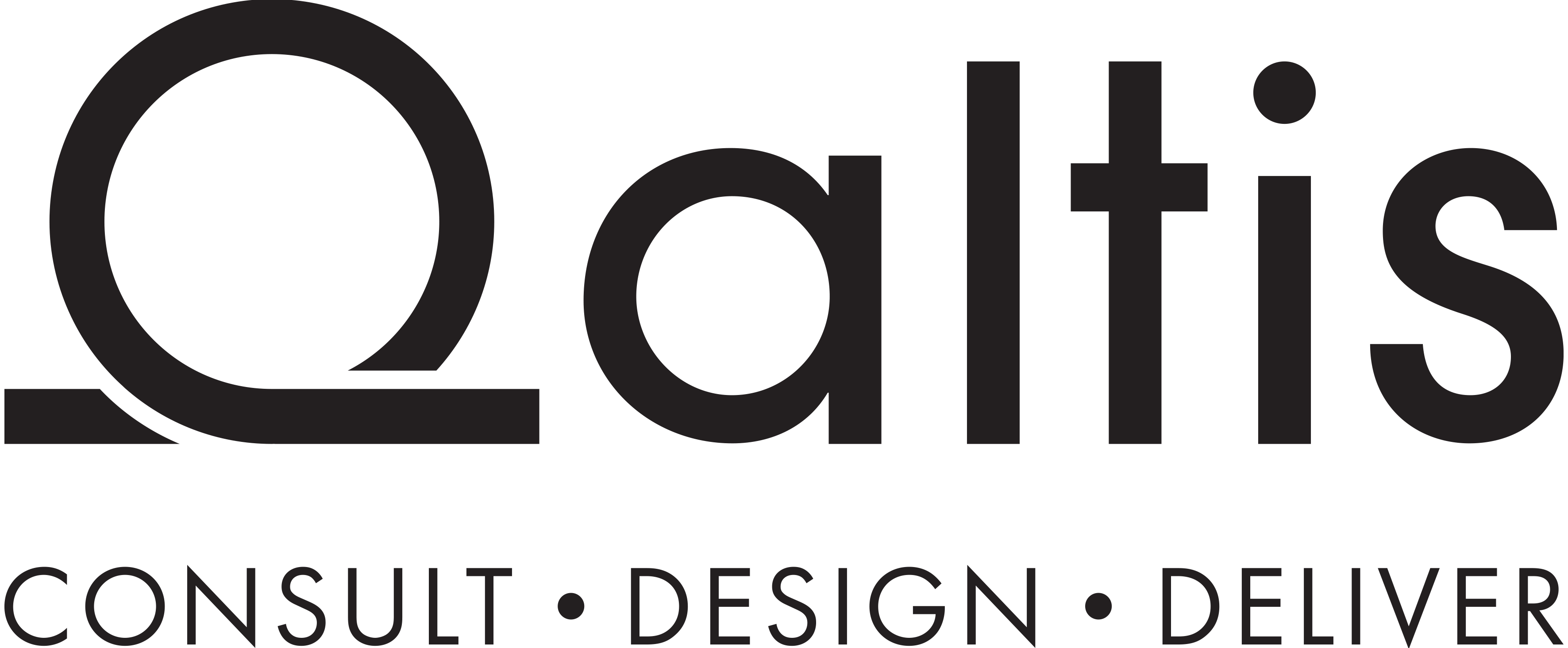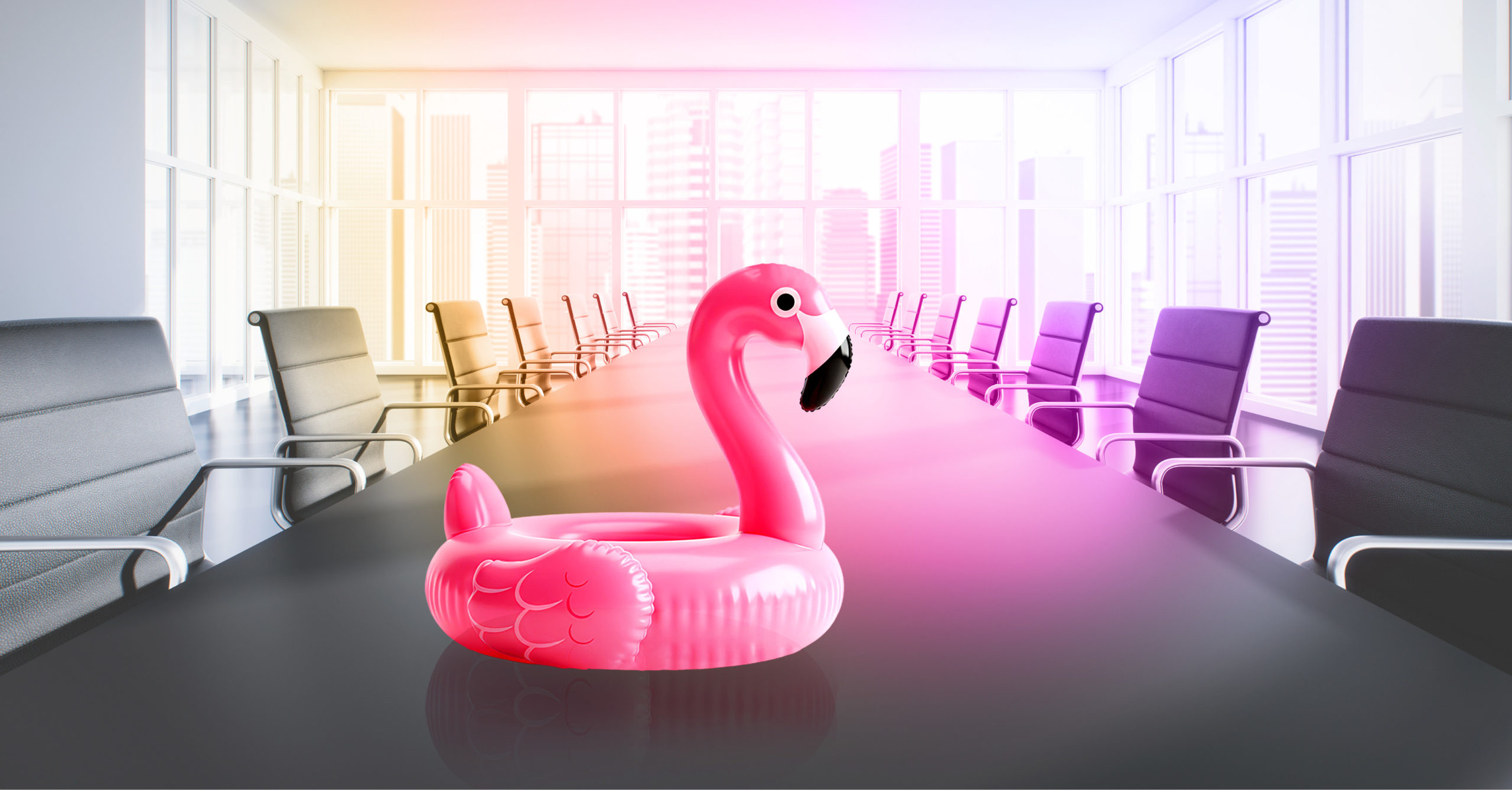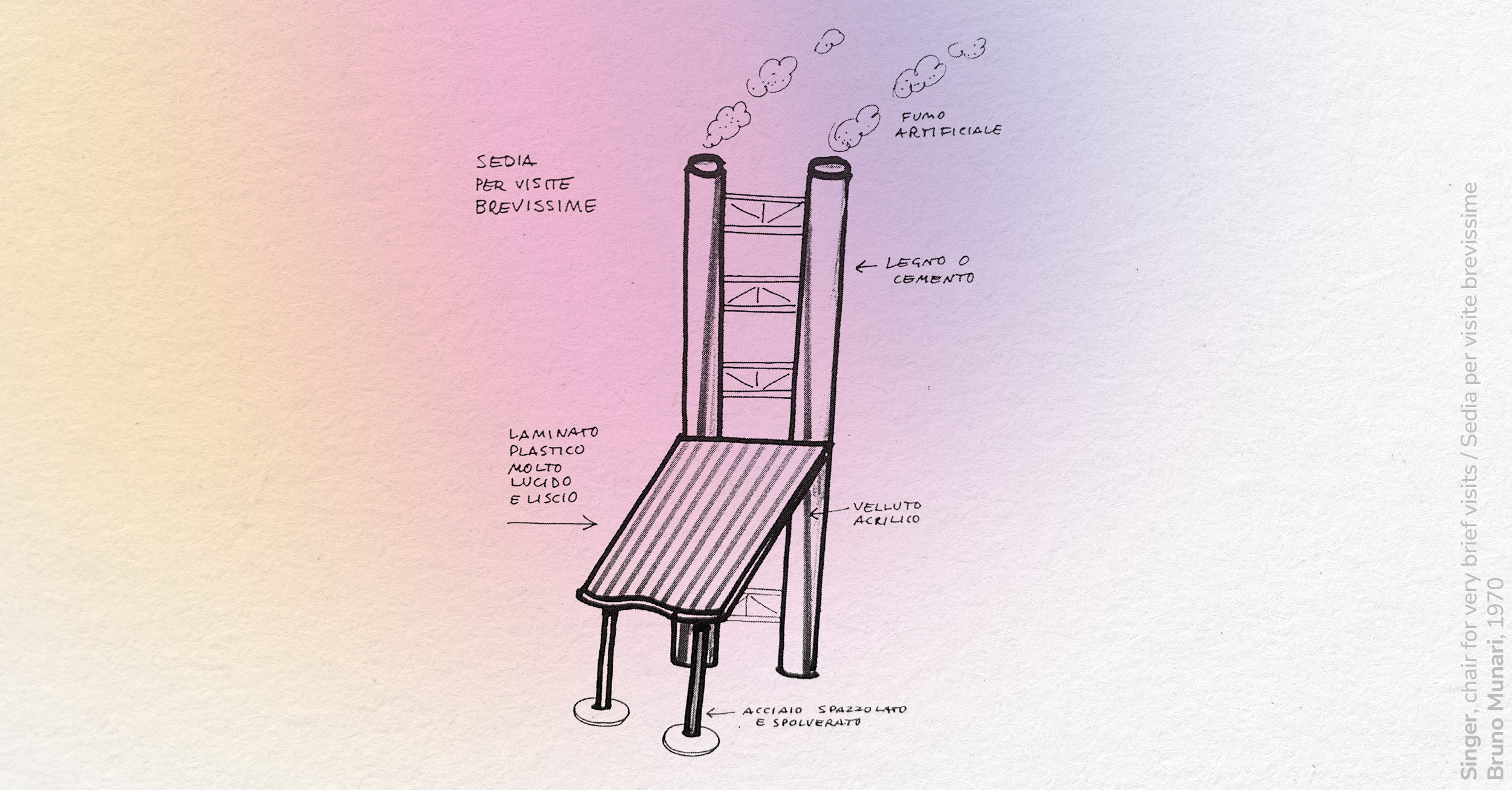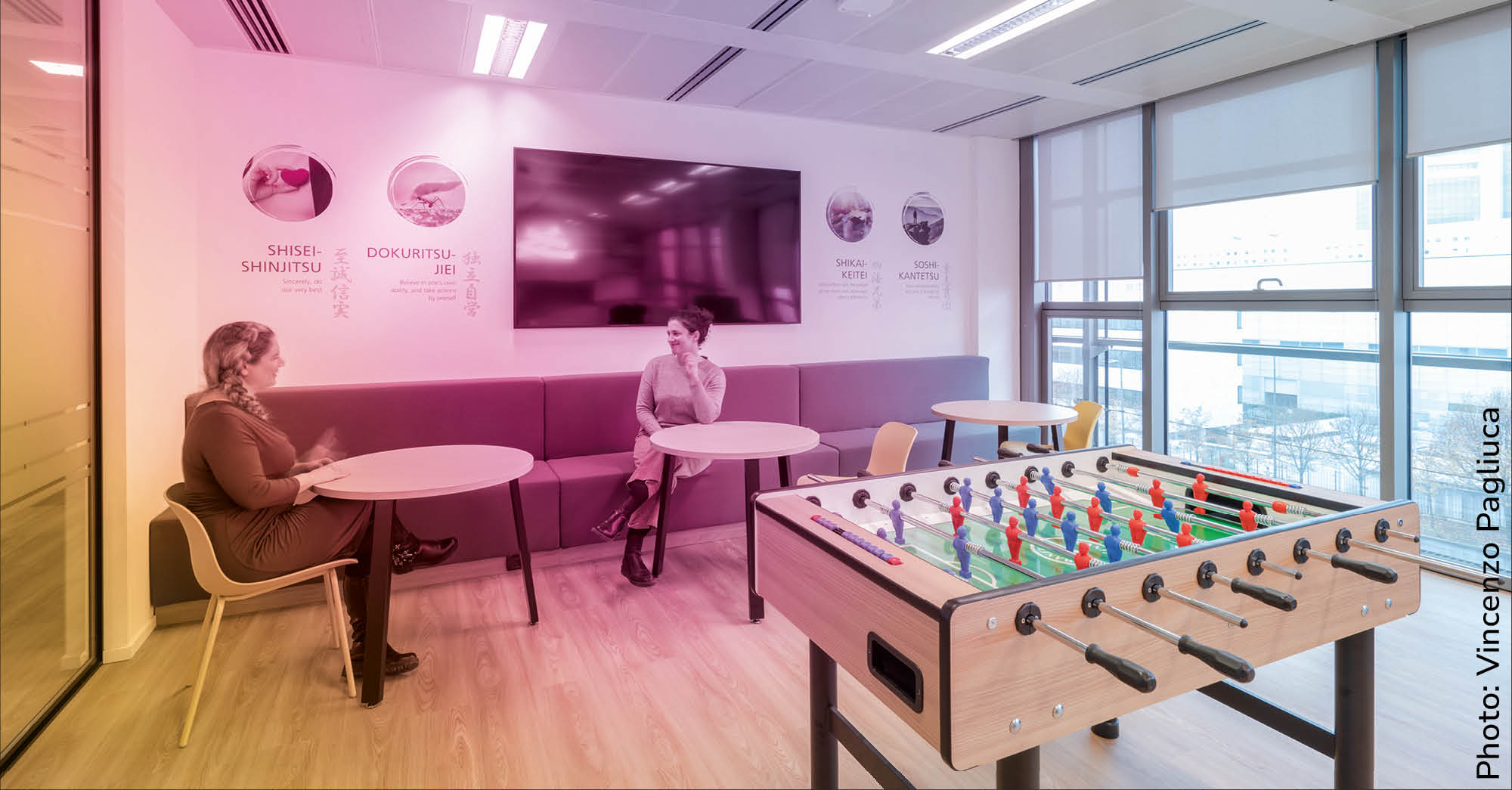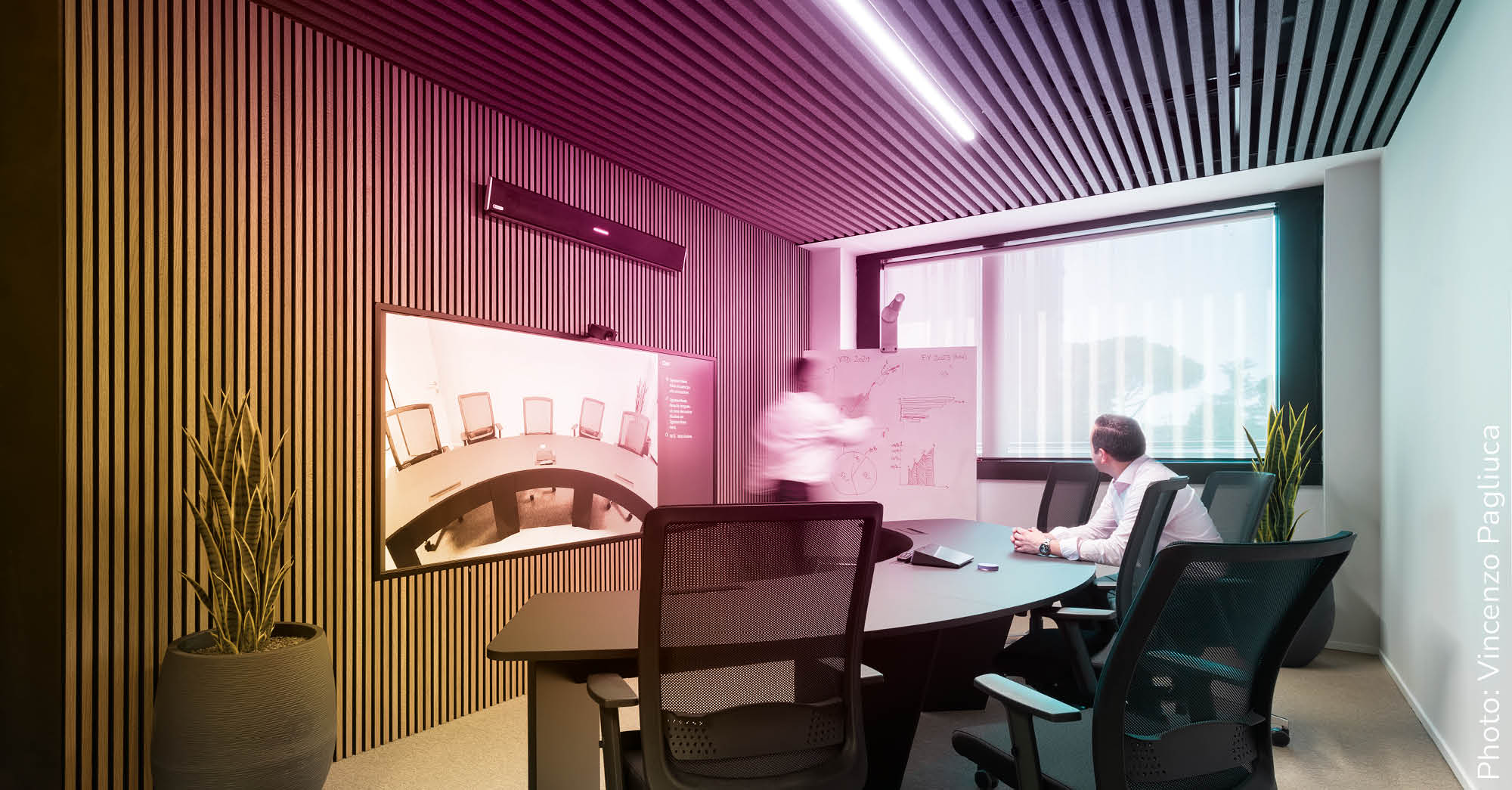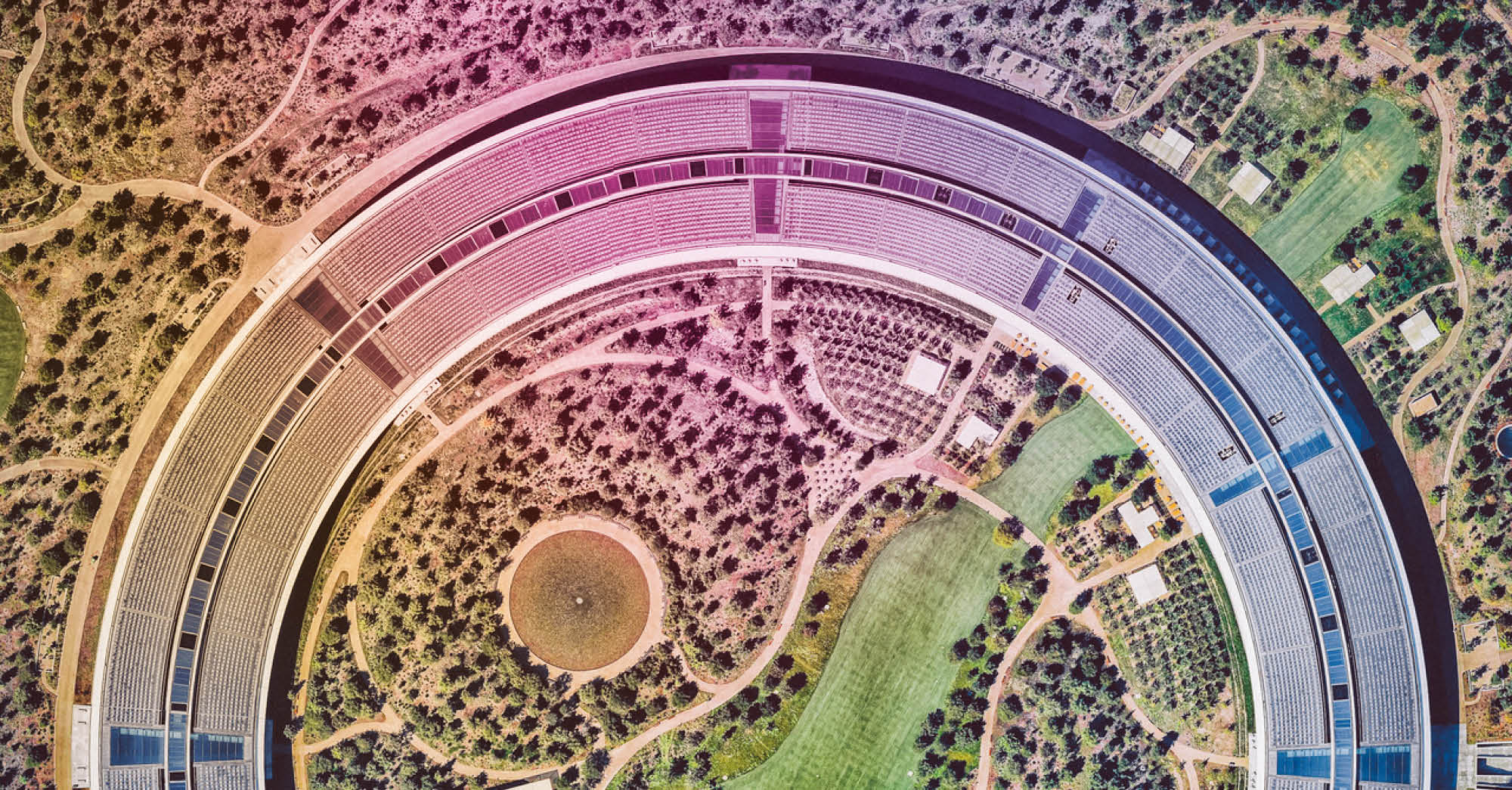What your Office Does When Everyone’s on Holiday
The shocking news? No, it doesn’t launch into guided meditation sessions. But it might just teach you something.
I hear the echo. The fridge is empty. The access badge no longer beeps. The coffee machine has stopped making those familiar noises. But I’m still here. Watching the sunlight sketch geometries across empty desks. Keeping an eye on the plants, real and fake. Wondering: why was I designed for full capacity, when no one thought about the empty times?
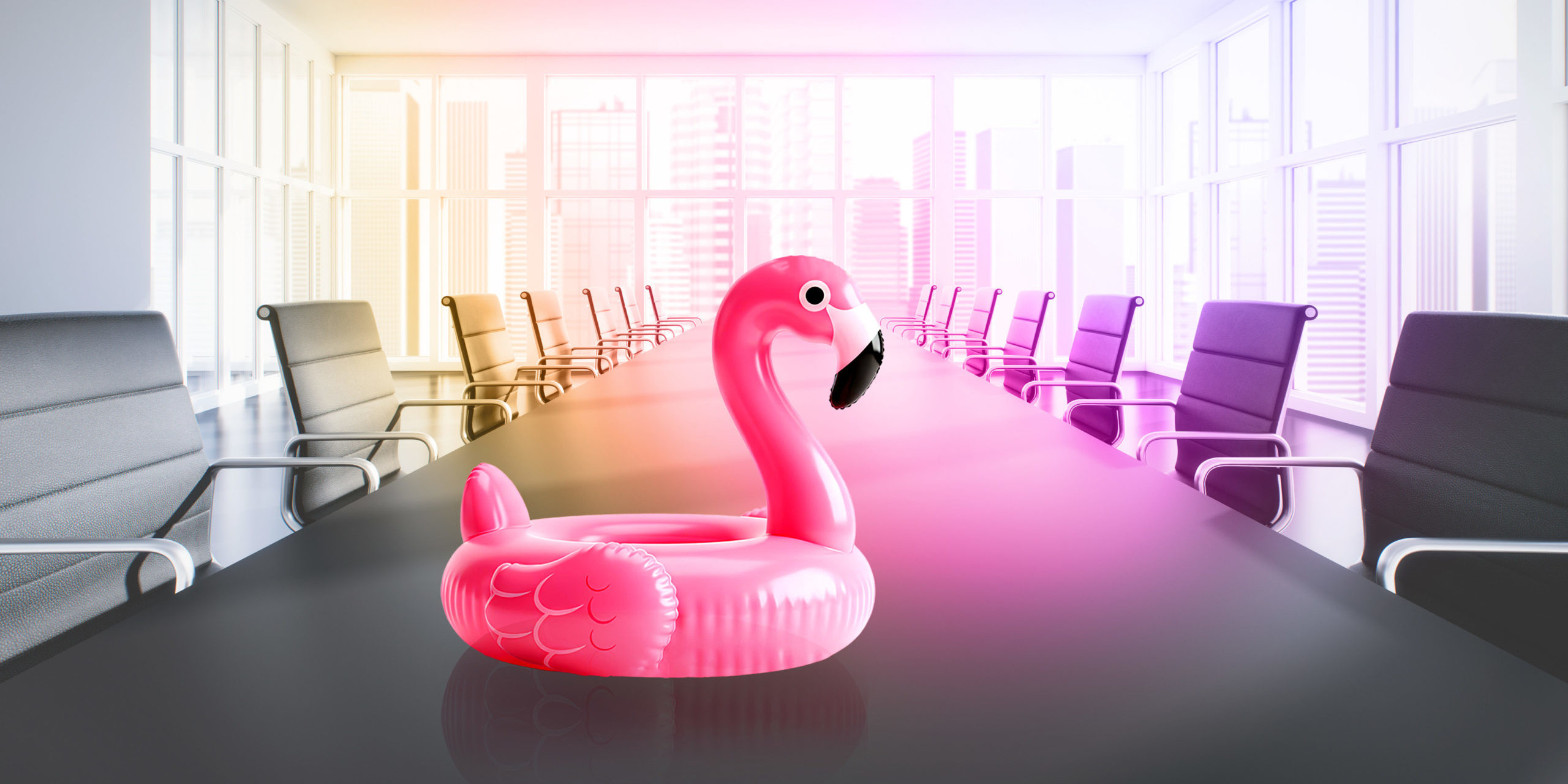
Measuring absence to design for presence
Every August, the same scene unfolds: empty offices, abandoned meeting rooms, square metres left unused. But hold on, this isn’t a glitch, it’s an opportunity. Periods of underuse are a key indicator, and if you know where to look, they reveal exactly how your space (doesn’t) work.
Who’s using what? When? For how long? And most importantly: why do some areas stay deserted even when the office is full? Monitoring space usage — flows, peaks, dwell times, activity mapping — lets you move from “it feels like” to “we know for sure”. And it’s often the quiet of the off-season that gives you the clearest view.
In these cases, data analysis isn’t about justifying a choice already made, it’s about guiding the next one. It helps you see where to invest, where to reallocate resources, where less space is enough (and where better space is needed). Because office ROI isn’t just about how many people work there, it’s about how much value the space can generate even when no one’s around.
A space that works even when it isn’t needed
A good design listens. It embraces fluctuations, anticipates absence, creates value even in silence. That’s where adaptive design comes into play: movable furniture, reconfigurable environments. Designing with downtime in mind — those moments when space slows down and shifts — is a form of operational intelligence. It’s the most practical way to make sure your office stays truly alive.
A well-designed office isn’t just a container for people. It’s an elastic system, able to respond in every mode: peak, average, low. And even low-low, like in August. It’s exactly when everything stops that a space shows its true nature. If it stays flexible, welcoming, and coherent — even with just five people inside (as if they were beta testers) — then you know you’ve made it work. And if you’re still wondering, Altis is here for you. Write to us at [email protected]
Out of office: tips for a clean digital detox
You said, “I’m off on holiday.” You set your out-of-office. You downloaded three books onto your Kindle. And yet, there you are: one eye on the sunset, the other on your notifications. If that sounds familiar, you’re not alone. It happens to many of us. Because it’s not just about switching off your phone, it’s about powering down an entire culture. We explored this summer paradox with Nicoletta Brancaccio, Architect and Head of Research at Altis, who helped us understand why disconnecting is so difficult, and how both mental and physical space can make it easier.
Spoiler: we don’t have magic potions or moral lectures. Just a closer look at the patterns that keep us glued to the screen… and how to spot them when the opportunity arises.

The brain doesn’t like stopping
Switching off takes effort, it goes against the way we’re wired. Our brains crave constant stimulation and notifications: each one a micro-reward, a hit of instant dopamine. Turning everything off is like cutting off the oxygen supply to a deeply ingrained habit. But there’s more. As Nicoletta points out: “Disconnecting doesn’t mean doing nothing. It means creating the conditions to process something new. It’s an active pause, not a passive one.” In other words, detox isn’t about halting, it’s about shifting gears. It’s when lateral thinking kicks in: creative solutions that emerge when we break free from our usual patterns. No wonder the best ideas come during a walk or under a beach umbrella, it’s all about timing.
When disruption is a good thing
Space can help us switch off, but it can also make it harder. The truth, says Nicoletta, is that “we don’t need to turn off the Wi-Fi. We need to turn on curiosity. And sometimes, to do that, you need to disrupt. Not by creating discomfort, but by breaking the pattern, surprising people.” That’s when a gap opens up: a new kind of attention is born, an unexpected emotion emerges. “Disruption isn’t a glitch, it’s a generative lever.” Spaces that are too symmetrical, monotonous, or predictable end up dulling us. Changing light, non-orthogonal geometry, or a corridor that splits unexpectedly: these are the elements that can reawaken us. But designing them takes intention: fewer Instagrammable furnishings, more multisensory languages that gently nudge our attention.
Emptiness isn’t wasted time, it’s fertile ground
“To truly regenerate, you need to cross a threshold. And that threshold is made of boredom, silence, emptiness.” Nicoletta reminds us of something counterintuitive: idle moments are essential. They’re a transitional space where the brain stops reacting and starts reorganising — thoughts, memories, emotions. A time that doesn’t produce immediately, but prepares the ground. The problem? No one teaches us this. For it to happen, we need to slow down, but more importantly, we need to feel allowed to. And that’s where the trap lies: we live in a culture of performance. Even our downtime is hyper-planned: over-planned holidays, mindfulness wake-up calls, and to-do lists full of things to tick off. Emptiness is the time of incubation. But to benefit from it, we have to welcome it.
We’re not suggesting you throw your smartphone out the window (tempting as that may be). You don’t need to disappear, you just need to know where to begin again. Detox isn’t just a break from Wi-Fi or a challenge to see who can last longest without opening WhatsApp. It’s a “form of applied clarity”: one that’s physical and relational. “Every action starts with intention. Even empathy is an intentional activation.” That’s why we need to design spaces that don’t just host us, they listen to us. Because in the end, we are natural beings. And as Nicoletta reminds us: “Nature is the highest form of intelligent imperfection.” Maybe it’s time to take our cue from her. And perhaps start small: like finishing this article, and going out to enjoy that sunset, for real.
In Praise of Emptiness
We live in a world of full. Full optional, full time, fully booked. But is this really an achievement or a subtle kind of condemnation? In our collective obsession with filling every centimetre, physical or mental, we’ve forgotten what it means to leave space. Yet emptiness isn’t a design flaw: it’s a conscious choice.
In architecture, emptiness is the pause that allows the eye to move, the body to breathe, and the mind to think. Outside of architecture, emptiness is the condition of possibility for anything to exist. Think of music: without rests and silences, there would be no melodies, only indistinct cacophonies.
And yes, we know: this isn’t the classic article you skim between one meeting and the next. This is more of an invitation. In the next few paragraphs, we’ll walk together through this undefined space with four different insights – from art to philosophy, music to the sense of care – to discover that emptiness, perhaps, is fuller than we imagine. As Isabella Ducoli, Head of Design at Altis, says: “In architecture, emptiness is not absence: it’s possibility. It’s the only space you don’t have to fill, but that asks to be traversed.”

1. Rachel Whiteread: sculpting the invisible
Rachel Whiteread, a British artist, has quite literally transformed emptiness into matter. Her works are casts of empty spaces: she fills with resin or concrete the places that usually remain invisible – the inside of a house, a bathtub, a bookshelf – giving us back their negative space as sculpture. As if to say that emptiness is a reversed fullness. A fullness that speaks of who was there, what it contained, of entire lives moving within those volumes. Because without emptiness, no space would ever truly be habitable: we couldn’t cross it, live in it, or act within it.
2. Gordon Matta-Clark: cutting to reveal
Then there is Gordon Matta-Clark, the American architect and artist of the Seventies, famous for his radical cuts into abandoned buildings. He would slice through walls to reveal their interior, creating huge architectural wounds that became new spaces of light and experience. For Matta-Clark, emptiness was a political gesture: it revealed what was inside, laying bare the essence of things, and of ourselves. As Isabella Ducoli comments: “Emptiness is an active field. It’s what happens when you remove the superfluous and leave only space for what matters.”
3. John Cage: the sound of silence
But you don’t need to get your hands dirty with concrete or wield a circular saw to understand emptiness. John Cage, an American composer, taught us that silence is also full of sound. In 1952 he composed 4’33”, a piece where the performer plays no notes. Four minutes and thirty-three seconds of apparent silence in which, in reality, you hear everything: coughing, chairs creaking, rain on the roof, the breathing of those in the room. Cage reminds us that emptiness is always full of something, you just need to know how to listen.
4. The Altis perspective: emptiness as care
If everything around us is oversaturated, emptiness becomes a radical act of care. Emptiness as digital detox, as mental space, as a design choice that renounces the superfluous to leave what truly matters: air, light, breath. It’s the square between buildings, not just an urban interstice but a place of encounter and sociality. It’s the clearing in a sacred forest which, in Shinto traditions, becomes a frame for the divine, a sacred space precisely because it is empty. It’s the Zen garden, offering nothing superfluous except its own essentiality, becoming a metaphor for contemplation and meditation.
To speak of emptiness as care means recognising we don’t need to fill every space to make it exist. On the contrary, emptiness is a reservoir of possibility, the field of all potential transformation. And above all, as Isabella tells us: “Emptiness is the last remaining luxury: a space you don’t need to justify, that exists to help you exist better.”
Chairs: a semi-serious anatomy of a design choice
Chairs are a strange kind of mirror. We sit on them for hours, we lean back, we grip their arms. Yet if we observe them closely, they reveal more than we think. They show us how we inhabit space, how we work, how we think. Bruno Munari once said, “Designing a chair means designing the body that will use it.” It wasn’t just a statement about industrial design, but an invitation to realise that every chair shapes the person sitting on it: it imposes postures, suggests durations, sets distances and degrees of intimacy.
We believe every gesture is an act of design, even choosing what to sit on. Observing chairs means reading our own cultural posture. That’s why we’ve created this small (semi-serious but methodical) map through design history and the psychology of inhabiting.
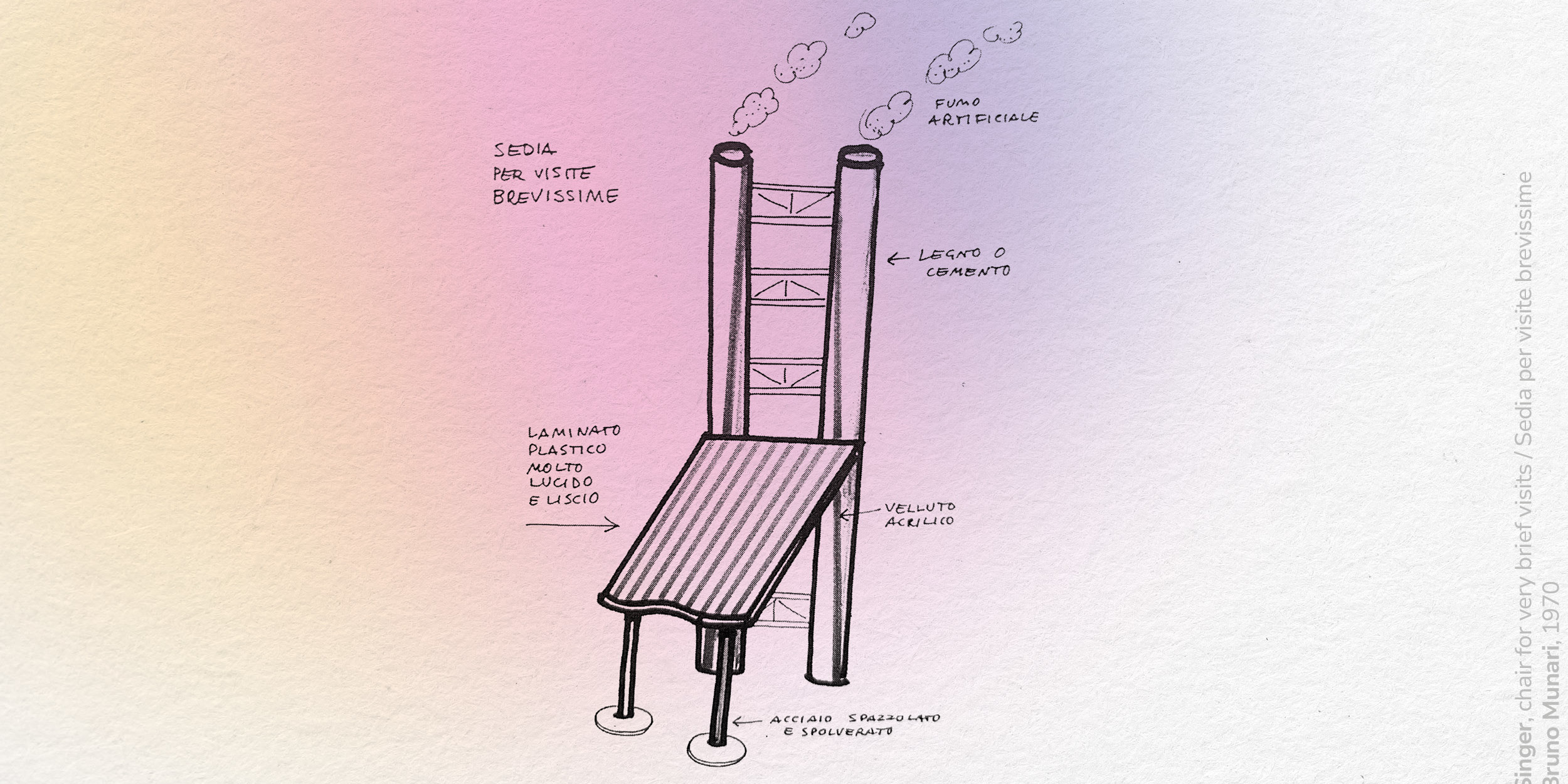
1. Bruno Munari’s “visite brevi o brevissime” chair
Munari designed it in 1945 as a conceptual provocation. An iron seat tilted forward, suspicious and slightly uncomfortable, intended for “very short visits”: the guest sits down but never relaxes, in fact, they slowly slide off. Needless to say, visits don’t last long. A design object can also be a psychological statement and social critique. This is the chair of someone who works with surgical efficiency: a minute longer would become an applied psychology session. If it could speak, it would say: “The exit is that way.”
2. Verner Panton’s Panton Chair
Designed in 1960 and mass-produced from 1967, it was the first chair made entirely from a single piece of moulded plastic. A pop icon of 1960s Danish design, it combined sculptural form with function, its S-shaped silhouette revolutionising the aesthetics of seating. This is the chair with the supple posture of someone who adapts to any change, but always with style. Today it sits in MoMA New York as a masterpiece of organic, industrial design. If it could speak, it would say: “I bend, but I don’t break.”
3. The Eames Lounge Chair by Charles and Ray Eames
Designed in 1956, it is the most iconic lounge chair in the world. Moulded wood, black leather, a posture that’s relaxed yet innately superior. Created to offer “the warmth and comfort of a well-worn baseball glove,” today it’s the throne of anyone who owns at least three volumes of critical theory and can quote Rem Koolhaas by heart – always with a gin and tonic within reach. If it could speak, it would say: “I’m working, even when I look like I’m on a break.”
4. The Aeron Chair by Herman Miller
Designed by Don Chadwick and Bill Stumpf in 1994, the Aeron Chair is the queen of contemporary ergonomics. Made of breathable mesh with no unnecessary padding, it offers infinite adjustments and has become a symbol of global smart working and tech office aesthetics. If it could speak, it would say: “My back comes first.”
Because chairs speak, too
Every chair is a personal manifesto: of power, comfort, or style. Observing it methodically, as we do with workspaces, means understanding who we are and who we want to be. In the end, that’s what design is about: interpreting details to create environments that truly reflect us. And this is where the Altis method comes in: analysing every choice, even the most seemingly banal, and transforming it into a conscious gesture aligned with how we live.
Emotions at Work: Not a Soft Skill
Emotions are everywhere. In involuntary gestures, in the tone of an email, in the glances exchanged during meetings. Yet when it comes to work, emotions remain confined to the realm of soft skills. Empathy, emotional intelligence, stress management. Beautiful words, all too often reduced to footnotes in a list of individual performance metrics.
But what if we were witnessing a shift, and what if the way we feel became an integral part of the way we work? This question doesn’t come from philosophy, but from cognitive psychology, neuroscience, and organisational anthropology. Fields that tell us, clearly, that emotion and cognition are one and the same: without the first, the second does not exist.
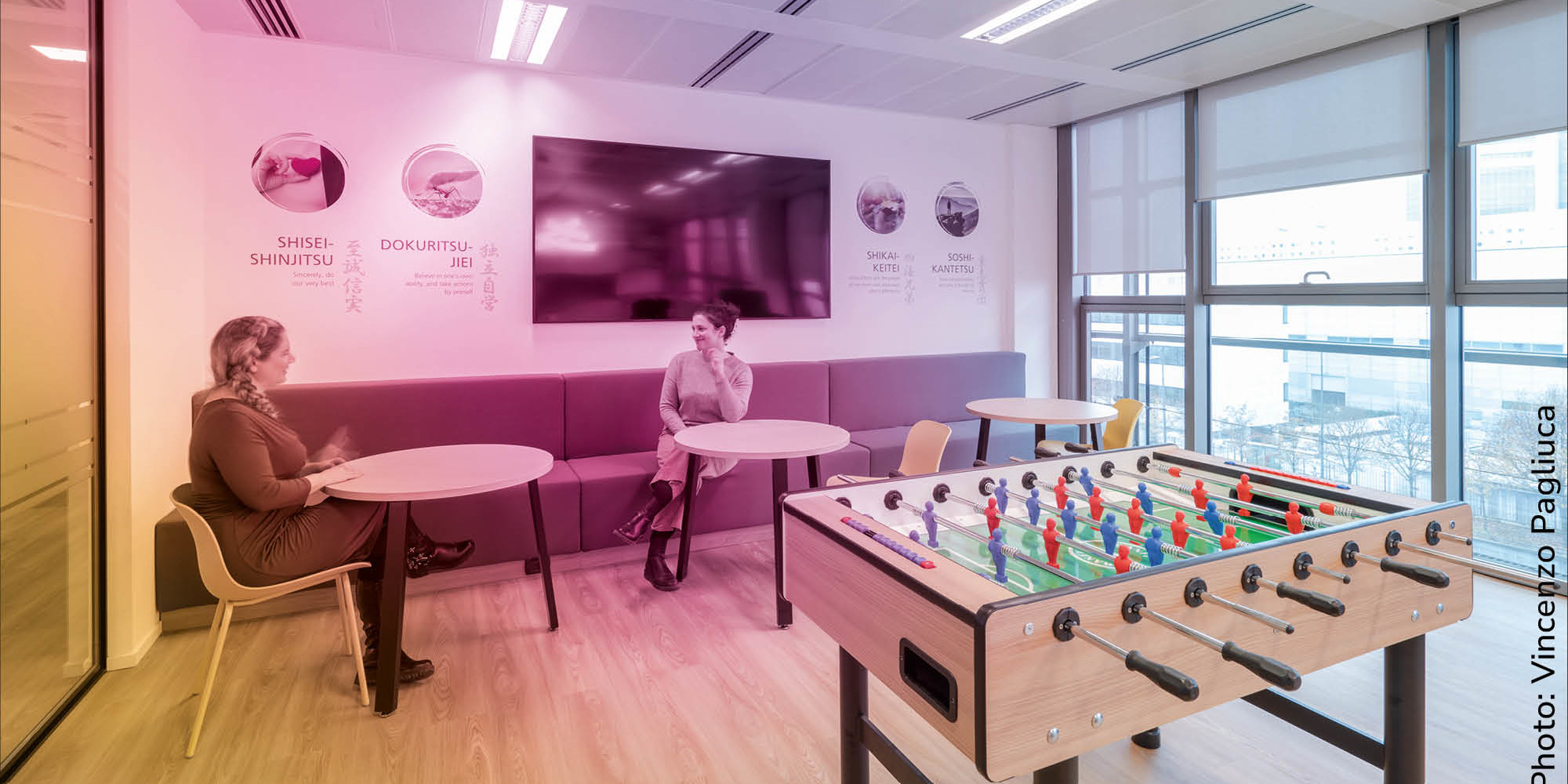
Emotional Based Working
At Altis, we call it EBW: Emotional Based Working. It isn’t a pre-packaged model, but an exploratory field we are mapping through our Proprietary Research. It arises from the evidence that no space, process, or company culture can truly work unless it considers the emotional dimension as a strategic resource.
Is it the opposite of ABW? No, it’s its complement. While Activity Based Working organises spaces and time around what we do, Emotional Based Working organises them around how we feel. Together, they describe work as it really is: a complex system of activities, relationships, emotional states, physical postures, and cultural narratives.
Why emotions really matter
Emotions are what allow us to make quick decisions, assess risks, create connections, and design with meaning. Neuroscientist Antonio Damasio wrote it decades ago: “We are not thinking machines that feel, we are feeling machines that think.”
Designing for emotions means creating spaces that are beautiful and functional, but above all able to activate emotional states coherent with the processes they support. It means recognising that a certain type of light, temperature, noise, or spatial arrangement can trigger irritation or creativity, fatigue or focus.
From activity to emotion: the next frontier
In our latest editorial exploration, we asked ourselves: is ABW still the best model? The answer emerged clearly: we don’t think it’s enough. On its own, it’s insufficient to grasp the complexity of contemporary work. To do so, we need to take a step forward – because it’s not only activities that define work, but also the emotions that drive, sustain, and transform them. And that is the true raw material of human work.
Is ABW still the best model? Towards a shift in paradigm
In 1994, Dutch engineer Erik Veldhoen — a pioneer of what we now call smart working — published The Demise of the Office. Not the usual rant about Monday morning madness, but a proper manifesto. A sharp critique of the standardised, impersonal, rigid office model. And from that moment on, at least on paper, the office was never quite the same.
Thus was born the ABW model – Activity Based Working – where the activity takes centre stage: if you need to focus, you sit alone; if you need to collaborate, you head to an open space; if you need to call your accountant (or your mum), you pop into a phone booth. Finally, a space that adapts to what you’re doing. End of story? Not quite.
It’s been thirty years. In the meantime, we’ve seen the rise of the internet, new leadership styles, Covid, Gen Z and their rebellious gestures, and the return of plants to the office. And yet, in many organisations, ABW is still treated as the final destination. But is it, really?
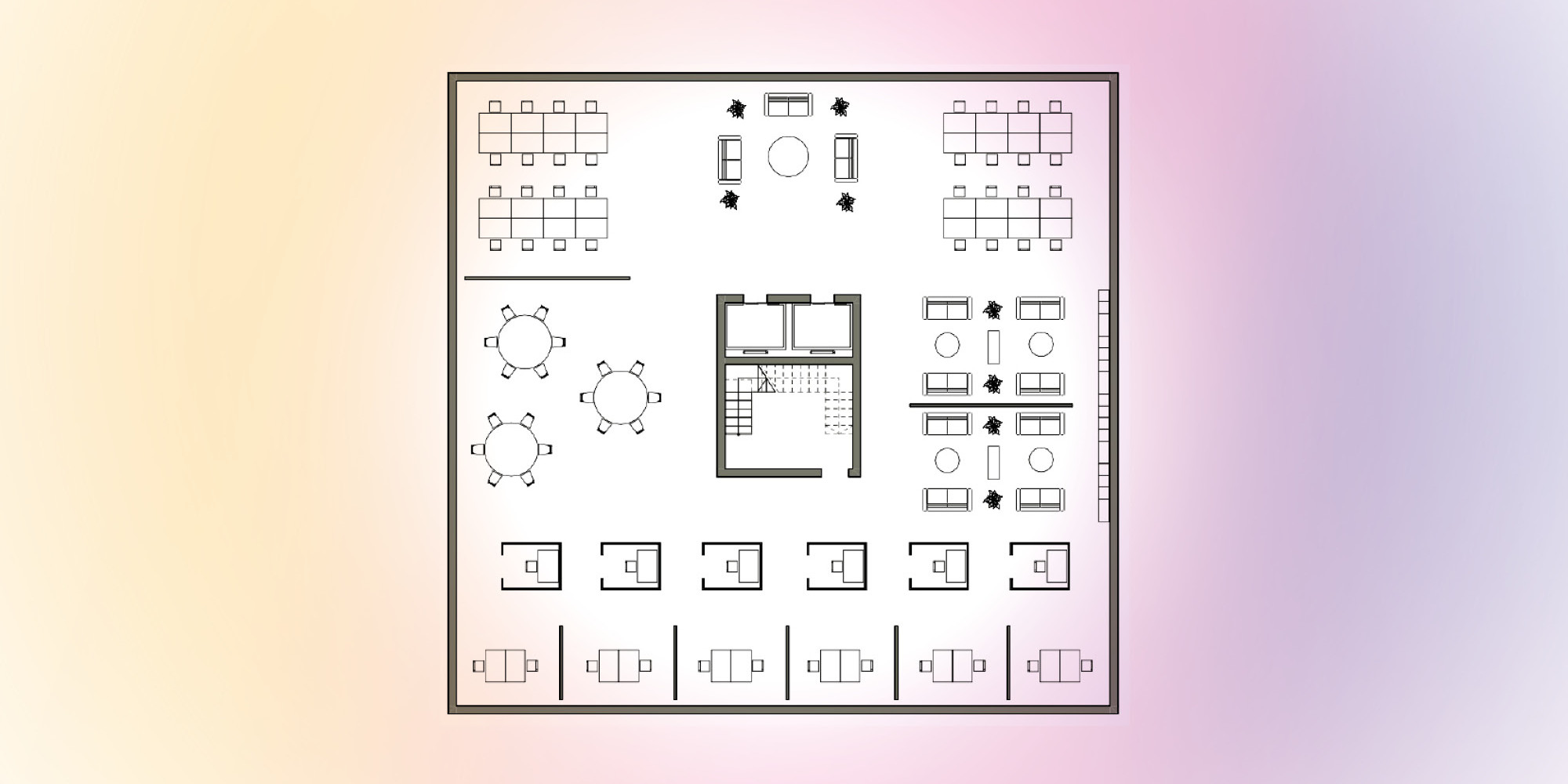
ABW worked. But we’ve moved on.
ABW was revolutionary, no doubt. It brought greater flexibility, more efficient use of space, and a boost in creativity and collaboration. But today, we work everywhere — not just where there’s a desk. Our tasks blend with our moods, time zones, Slack notifications, and serotonin swings. We’re no longer just “operational units”. We’re tired, curious, overloaded individuals searching for meaning. And this is where ABW starts to show its limits.
Because nowadays we also need other kinds of spaces: ones that allow us to recharge, to connect, and simply to exist — even when we’re not doing anything “productive”.
From activity to emotion
After years of designing spaces for tasks, we forgot about the people performing them. With their bodies, their stories, their energy levels and vulnerabilities. What if this became the new paradigm? Not a replacement for ABW, but an evolution.
A model that begins with a different question: “How does the person working here feel today?”. This is the era of hybrid work, of psychological wellbeing at the centre, of relationships as a productive force. Don’t just take our word for it — McKinsey and neuroscience agree. Perhaps it’s time to design spaces that:
– support emotional regulation, not just multitasking
– foster trust and belonging, not just “collaboration zones”
– embrace human complexity, not just its calendar
No need to throw it all away – just change the lens.
ABW took us far. But today, the challenge has shifted. Because people entering a space aren’t just looking for a desk — they’re looking for a context that understands them. Maybe now is the time for Emotional Based Working: an invitation to tune into the emotions that inhabit a space, and to design not just for what we do, but for who we are. This is only the beginning.
If this question resonates with you, or even if you’re just curious,
write to us at [email protected].
We love hearing from people who are ready to look at things differently.
A Matter of Timing: When Method Meets the Right Moment
Everyone talks about methodology, but few talk about the time it really takes to apply it. In our world – workplace design, architecture, corporate culture – time is often experienced as a race against the clock. Everything now, or everything late.
The Altis methodology was created precisely to overcome this false choice: it doesn’t slow things down, it orchestrates them. It doesn’t chase deadlines, it manages them. Because when your method is solid, time becomes an ally.
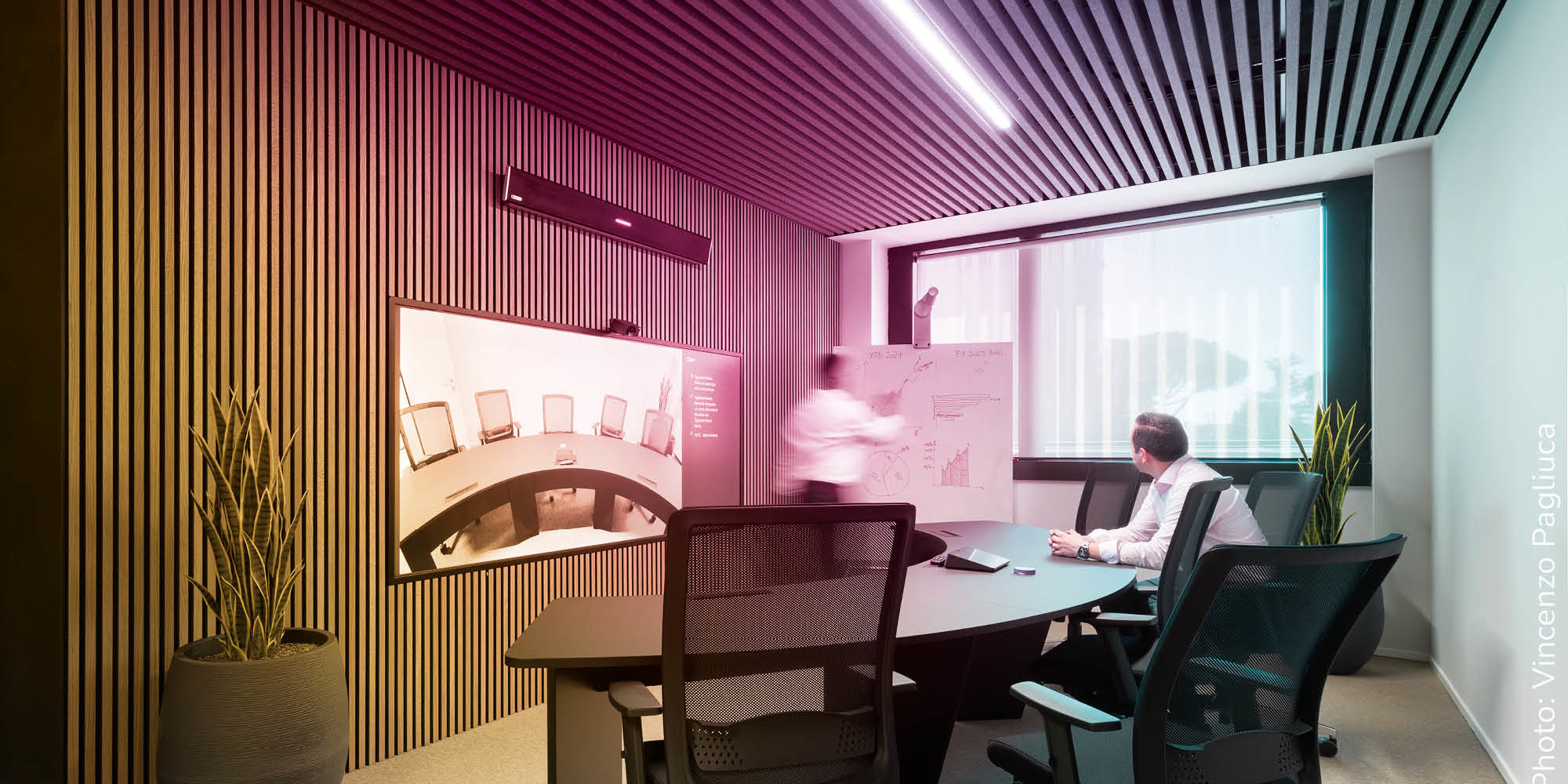
The Altis Methodology
Altis works by tuning in. First it observes, then it acts. First it listens, then it designs. First it understands, then it rewrites the rules.
Because every project has its own frequency, and our job is to catch it – before setting timelines, steps, and direction.
We’ve given our method a name: Consult – Design – Deliver
Yes, it sounds good. But more importantly, it works. Consult means opening a conversation without assumptions: we ask questions, observe the context, meet people – from the CEO to the youngest manager. Design is where thinking, data and empathy come together. We co-create scenarios, translate insights into layouts, bring needs and visions into dialogue – sometimes even a simple workshop can transform a floor plan. Deliver is more than a handover: it means leaving a lasting impact. Every space we create is also a cultural statement. It matters that the people who inhabit it feel at home, naturally.
Of course, our method includes tools. But also pauses. There are analyses and sprints – and moments of productive stillness. All of them are necessary stages. And while it might seem like lost time, to us it’s the only way not to waste it.
Our Competitive Advantage? Sensitivity
In real estate, time is a critical variable: if construction runs late, penalties follow; if the office isn’t ready, you’re paying double rent. Everything revolves around time sensitivity, yet it’s one of the hardest sectors to manage it well. Altis starts here: by delivering projects that are solid, punctual and aligned with the brief. If there’s a budget, we respect it. If there’s a deadline, we’re ready.
It’s not just about efficiency – it’s about designing with the real constraints of our clients in mind, and understanding the tangible impact of every delay – financial and organisational.
To us, reading time means this: knowing when to accelerate, when to pause and reassess, and when to simply let the idea take shape.
This isn’t flexibility – it’s conscious design, the kind that seeds real change.
On Time, On Budget. Anywhere
Altis works across several countries, collaborating with local teams to adapt our method to each context’s cultural, regulatory and operational specifics. That’s how we keep our promise: staying on time and on budget without compromising design quality. Because for us, the goal is always the same: shaping a space that works just as we – together with the client – imagined it.
If you’d like to see how we’ve helped others before you, visit www.altis-project.com or get in touch at [email protected].
We’re always up for a conversation.
The Apple Campus in Cupertino: deconstructing an icon. Or, the ethics of a facade
Everyone knows it, but few have truly experienced it. The Apple Campus in Cupertino is the secular cathedral of the 21st century: 260,000 square metres, a perfect ring designed by Norman Foster, curved glass panels everywhere – and a message that couldn’t be clearer: the future has already knocked here. But behind this geometric perfection that statically mimics an organic form, a question inevitably arises: is flawless architecture enough to reflect a work culture? Or, to put it another way: can a façade contain all the contradictions of those who work inside it? Probably not.
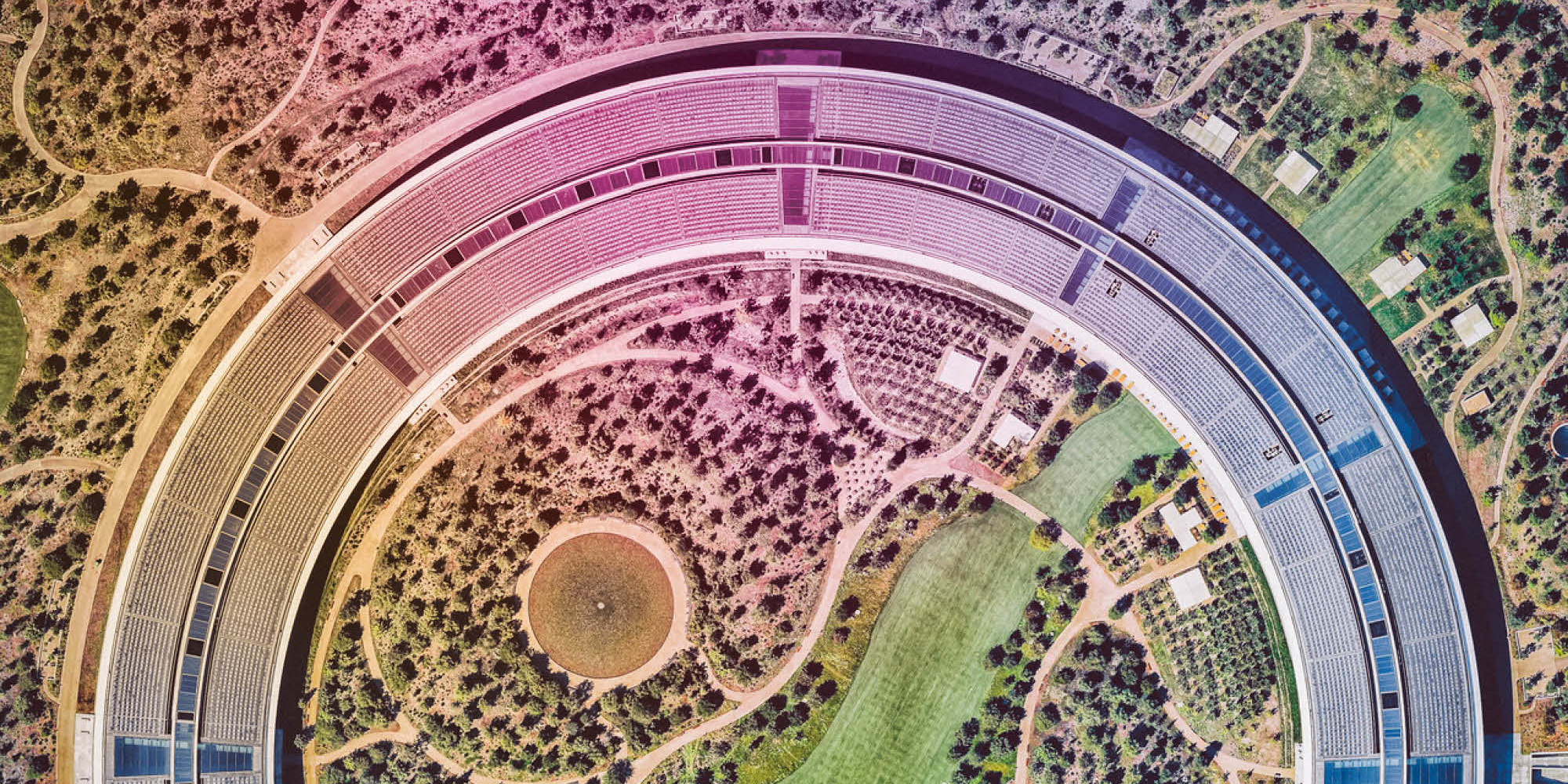
It’s not (just) about beauty
The Apple Campus is a monument to performance: vast open spaces, immaculate surfaces, diffused light. All designed to spark those “creative collisions” between employees that Steve Jobs held so dear – the same Steve who, back in the Pixar days, proposed a single central block of toilets to force people to bump into each other several times a day (a proposal eventually rejected by the execs). That principle lives on in the ring shape of Apple Park, pushed to the extreme. But did you know that when the campus first opened, many teams actually asked to stay in their old offices? Or that Apple, post-pandemic, was among the strictest in enforcing the return to office, stirring internal controversy? That’s where the narrative starts to crack. Because when the shell is louder than the experience, architecture becomes representation – and nothing more.
Caution: Beyond Form, We Need Coherence
For a space to truly work, it doesn’t just need to be beautiful – it needs to be authentic. A headquarters sends a message, but if the people inside don’t feel it belongs to them, that message loses its meaning. And this isn’t just about Apple – the issue is systemic: it’s the myth that the environment can replace culture, that all it takes is “designing” a way of working to make it effective. The point isn’t to abandon ambition or aesthetics. On the contrary: they should serve the real, everyday experience of people. Because if architecture doesn’t engage in dialogue with those who live and breathe the space, it remains a surface. And today, more than ever, we need less façade and more depth. Less object worship, more design ethics. Icons can teach us a lot – absolutely. But icons aren’t there to be copied. They’re there to be interpreted. To create a beautiful office, you need an architect. To create an office that works, you also need a method.
That’s why we like icons: they make excellent starting points for healthy debate. If you’d like to talk about it, drop us a line at [email protected].
The LA workspaces after the fire: when everything burns, what’s left is trust
As many will recall, in January Los Angeles was hit by a devastating fire — a catastrophe that reshaped the city and destroyed more than 10,000 buildings.
But those places were more than just structures.
The language of architecture tells us how we emotionally inhabit space — and how space, in turn, shapes us. What we take in from the local café, the restaurants that feed us, the offices and co-working spaces that host us, are sensory impressions. Which means that when those places disappear, a part of us disappears too.

Designing to reassure, not just resist
Sirens. Smoke. Evacuations. For those who remain — and survive — everything halts. The idea of continuity, the very scaffolding of the everyday, begins to fracture. And with that, our sense of stability starts to slip.
In recent years, we’ve learned to talk about resilient, flexible, adaptable spaces. But in moments like these, resilience alone isn’t enough. We need reassurance.
Physical space — even when shared, temporary or decentralised — can offer more than stable Wi-Fi. It can become an emotional container. A fixed point in the chaos. This isn’t about aesthetics or furnishings. It’s about design intention: lighting that doesn’t dazzle, volumes that don’t oppress, sounds that don’t invade. Design that listens — without raising its voice.
The Cognitive Office: when space holds you
This isn’t an idealistic dream. It’s a possible new standard. A space that doesn’t just support productivity, but also welcomes vulnerability — even in a city that happens to be the largest metropolitan area in the United States.
Because space isn’t just a container. It’s a mental ally. And in moments of collective fragility, it can become one of the few things that hold.
Don’t imagine zen rooms and matcha tea. This is a design approach that begins with one question: “What does the mind need in order to restart?”
Unlike roads or power lines, memories — like projects, hopes, and dreams — aren’t easy to reboot. Form follows function, they say. It’s a rule we’ve lived by for decades. But in times like these, function isn’t just operational. It’s emotional, perceptual, deep. Here, function must follow feeling. And to answer that question, we need spaces of listening. Of decompression. Of reorientation.
Designing trust
When everything around us shakes — whether from a fire or the background noise of daily uncertainty — it’s not performance that saves us. It’s the ability to still feel connected. Seen. Part of something. That’s why, today, designing space shouldn’t just mean optimising. It should mean caring. And ultimately, designing trust. This is the lens we use at Altis: a psychosocial approach that starts from people — from their tensions, their unspoken needs.
We don’t design just to help people work well. We design to help them feel well — even when working becomes difficult.
You can explore this topic (and much more) in our dedicated section on the Altis website: Proprietary Research.
Forget perks: Gen Z wants a reason to stay (in your office)
A ping-pong table won’t cut it. Neither will rooftop yoga or a neon “People First” sign. Gen Z isn’t looking for perks. They’re looking for purpose. And the most surprising thing? They’re not out to “change the world” (spoiler: climate change and variable-rate mortgages have already got that covered). They’ve simply stopped trading a stable job for the right one.
The logic is simple: If I’m going to spend eight hours a day somewhere, I want to know why. And I want that “why” to be real — not framed on a dusty mission statement or buried inside a Deliveroo voucher.

Things you wouldn’t expect Gen Z to say (but maybe you should)
“I want to stay at my company. If I find a place that treats me well, I’m not leaving.” — Francesco, 25, software engineer. Loves Excel. Hates passive-aggressive managers.
“I don’t need to work in a swimsuit. I’m fine with being in the office — as long as it’s human.” — Chiara, 24, marketing assistant. Stopped believing in boat-based team building by her second Zoom meeting.
“I want to grow professionally. But not at the cost of my mental health.”
— Edoardo, 23, consultant. Meditates daily. Left a “secure” job because it secured him to a desk.
What the data says (besides what your intern’s already told you)
Recent studies confirm that Gen Z is dismantling the idea of the “permanent job”, piece by piece. The signs? Clear enough to flicker the overhead fluorescents:
- Gen Z is already the most represented generation in workplaces. By 2030, they’ll make up 30% of the global workforce. They’re not the “future”. They’re already here.
- 78% prefer hybrid environments — but well-designed ones. A meeting room with strip lighting doesn’t count.
- Only 30% feel engaged by their physical work environment. Translation: the remaining 70% — stuck in a cubicle under a middle manager’s breath — are drafting their resignation letters.
- They want authenticity, sustainability, real flexibility — and spaces that give them a reason to stay, not an excuse to leave.
Oh, and did we mention fair pay? There’s also that. The bottom line: they don’t want a cooler company. They want a more honest pact.
So what now?
Less paternalism. More trust. Less talk about resilience. More actual listening. Fewer “we care about you” slogans. More: “Tell us what you need.” They’re looking for spaces that speak the language of coherence, transparency — and yes, kindness too.
Those who manage to build cultures and environments that are flexible yet clear, warm yet well-structured, are already ahead of the game. The rest? They can keep buying pouffes. Just don’t complain when no one sits down.
Curious whether your office speaks Gen Z? Try answering these questions:
- Is flexibility real — or just remote Fridays?
- Is the space designed to support work — or just decorated with a trendy sofa?
- Are your values visible in your actions — or just on the wall?
- Can people choose where to work in the office
- Community — or social obligation?
- Is there actual greenery — or just a cactus at reception?
- Does management listen — or just say they do?
If you found yourself rolling your eyes more than once, the problem isn’t Gen Z. The problem is that you’re still trying to keep them with meal vouchers. Instead, you could start with a simple question: “If I were 24 today, would I stay in this office?” If the answer is no, it’s time to make room. The right kind.
